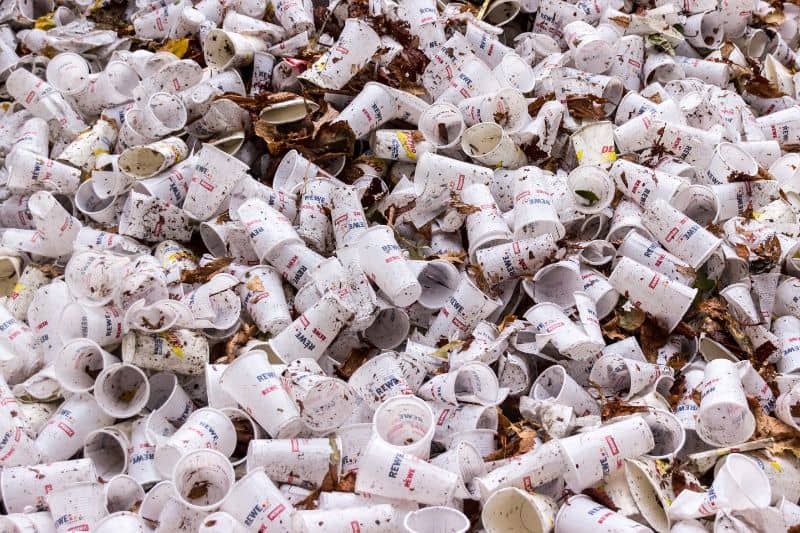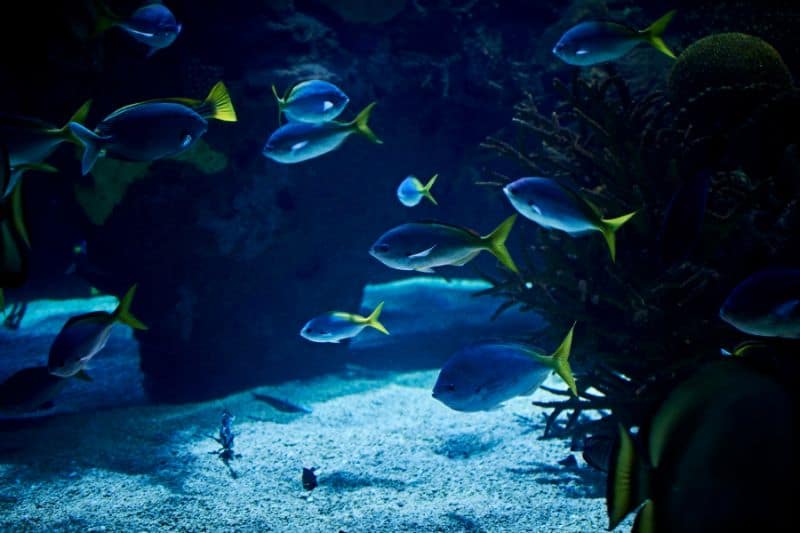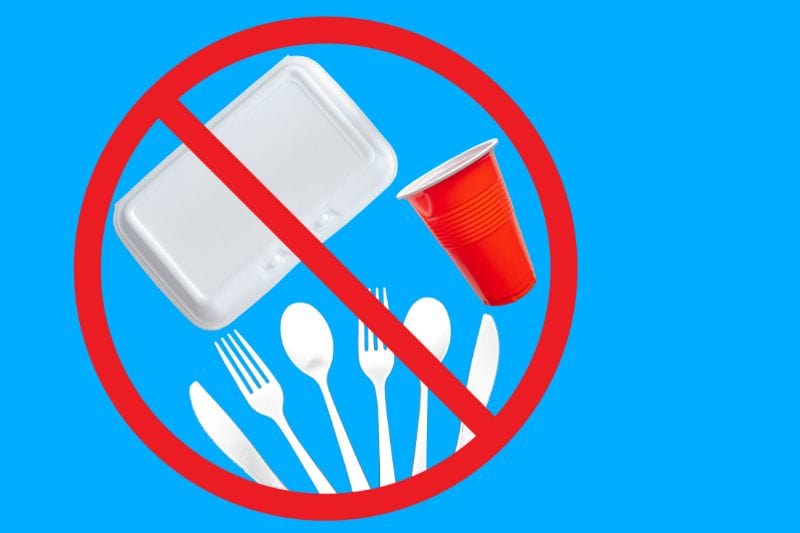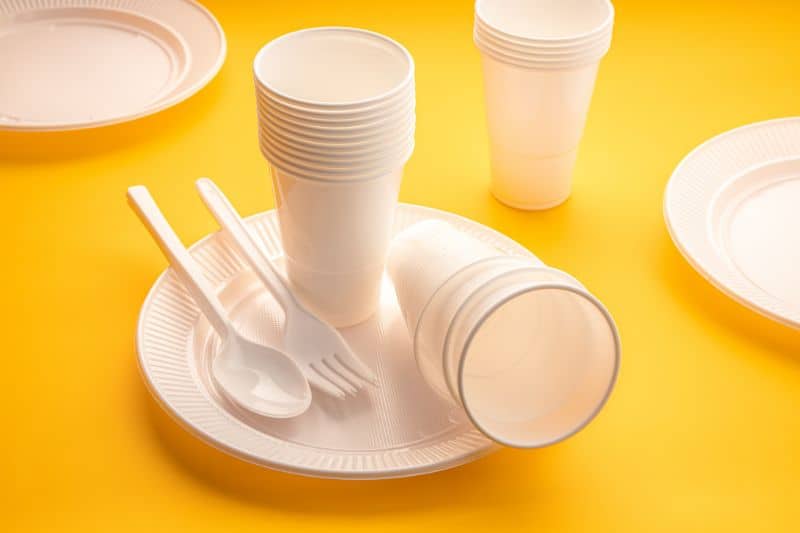Cutlery is a collective term used to describe the tools used for the preparation and handling of foods or drinks. They form part of the general term ‘utensils’.
Cutleries are commonly made of plastic, aluminum, or steel. However, the concern is how plastic cutlery is easily disposable, which has led to vast environmental pollution.
Single-use plastic cutlery has especially become easily disposable, leading to plastic pollution and environmental degradation. Common examples of plastic cutleries readily disposed of include straws, forks, spoons, and knives.
This article seeks to reflect more on the growing impact that plastic cutlery pollution, and other disposable utensils in general, has on the environment and the possible solutions to the menace.
Plastic pollution-free world is not a choice but a commitment to life – a commitment to the next generation.
~ Amit Ray
Environmental Impact of Plastic Cutlery
Environmentally, plastic tableware has the following effects:
1. Pollution of Waterways

Fast-food joints offer meals in disposable plastics for easy disposal. Plastic dishes, straws, forks, and spoons are packaged with the food, encouraging quick consumption and subsequent disposal.
Unfortunately, over half of the plastic used is discarded without recycling or reuse. This disposable culture in fast food contributes significantly to environmental concerns surrounding plastic waste.
This has led to the deposition of this plastic cutlery into waterways such as oceans, rivers, and seas, contaminating the waterways. And to make matters worse, these are the same sources used for providing water for domestic use, water for industrial activities, and water for drinking.
2. Endangers Wildlife
Plastic cutlery is used almost everywhere, whether at the office or in outdoor meetings. Outdoor activities such as camping or visiting game reserves mean that food has to be homemade and packaged to avoid excessive costs for the trip.
There is the option of buying fast food that will last the whole trip. These foods are most likely packed in plastic food containers and will be served with plastic spoons, forks, plastic cups, and plastic plates.
By the end of the trip, these plastics will not be repackaged to the travel bags for reuse nor be washed for use. They will be disposed of in the same park that has wildlife.
Wild animals will feed on these items, with some animals mistaking them for food, and end up being choked to death or causing severe injuries to their bodies. The consumption of plastics can also clog up the stomachs of the animals if they don’t injure or cause their death.
Since plastics contain lots of chemical contaminants that are bio-accumulative, their consumption by herbivores in the game parks may lead to the extinction of some of the keystone apex species, such as lions, leopards, and cheetahs because the logic will be that they consume most of the plastic.
3. High Carbon Footprint
Plastic cutlery has a lot of impacts even before it gets to the market. This is because there is a lot of energy and carbon emitted during their production, leading to the addition of heat and carbon to the atmosphere.
This carbon, in the form of carbon dioxide, combines with other greenhouse gases such as methane and ends up causing devastating climatic changes.
4. Extinction of Marine Species

The presence of plastic cutlery on large water bodies means that there is a cause of suffocation for marine life. Various species in marine waters depend on air circulation from the atmosphere and diffuses into the water. Plastic pollution ends up covering the water’s surface, leading to the impermeability of air to the water masses.
Moreover, some of these small plastic cutlery, such as spoons and forks, can be ingested by marine life when mistaken for food, leading to death. Fishes can also be entangled in some of these cutleries, leading to suffocation.
In addition, the few that survive ingestion get caught by fishermen and used as food, which is a health hazard. Due to bio-accumulation, the small broken particles ingested by fish end up being greater and greater in concentration as they move vertically in the food chain with, a man being at the apex.
5. Degradation of The Environment
Most of the chemicals released during the production of plastics, such as vinyl chloride and benzene, are carcinogenic and neurotoxic.
The use of plastic cutlery also leads to massive disposal of plastics, leading to the filling of landfills. Without clear directives on discarding plastic cutlery after use, it can be spread all over the streets, thus dirtying the environment.
6. Air Pollution
Sometimes, some people resort to burning the cutlery plastic waste, which releases many toxins into the atmosphere. These toxins mix with the same air that living organisms, both plants and animals, take up.
The inhalation of this contaminated air over a long period of time may lead to a myriad of respiratory diseases for humans, especially those that can be cancerous.
7. “Plastic Menace” – Plastic Is Slowly Covering the Surface of The Earth
Plastics are deposited almost everywhere on land, creating a global “plastic menace.” Even farming lands are riddled with plastics that were discarded 300 years ago. Waterways are also covered by plastics.
Cases have been reported, and pictures have been taken where plastics float on water over a vast area to the extent that one cannot even know whether there is water or land below those plastics.
The sea bed is also becoming a deposit of plastics. And even more shockingly, plastics have been sighted piling as far up as Everest – the tallest mountain in the world. Plastics have also been found in Henderson Island, an island in the middle of the Pacific Ocean.
What’s more, during a study trip by scientists to the continent Antarctica, whose climatic conditions do not support human life, plastics were discovered there.
8. Harmful to The Health of Humans
Risks of developing kidney stones, breast and liver cancers, reduced sperm count, and hormonal imbalances in humans are from the plastic cutleries used on a daily basis.
Eating hot meals on plastic crockery could increase risks of these health conditions for adults and children because when plastics are exposed to high temperatures or heat, toxins such as dioxin, Biphenyl A, and Phthalates – chemicals used to make plastic soft are released. They then get consumed with hot food.
Some Affordable Solutions to Plastic Cutlery
Now that we’ve seen that plastic cutlery can be detrimental to the environment and our health, let’s see some of the possible solutions to help prevent further damage and solve the current problem.
1. Use Reusable Metal Cutlery
This is the easiest way to cope with the use of plastic cutlery, especially for households and even for restaurants. By using metallic cutlery, only regular washing of utensils is needed. This means there is no disposal, and this cutlery can last longer while still serving its purpose.
2. Use of Compostable Cutlery
Metallic cutlery is a good alternative to plastic cutlery, but it has disadvantages, especially for a large party where it can be costly. In such cases, compostable cutlery can serve as a great substitute.
Compostable is biodegradable and can, therefore, be disposed of in landfills, integrated with other compostable materials such as organic matter.
3. Reduce, Reuse, Recycle
A culture of proper disposal of plastic cutlery after use must be promoted to ensure they are collected and sent for recycling by recycling industries.
Recycling can also be done at home. Cleaning the plastic containers or food boxes and cups that have been used; they are reused over and over to store other food materials.
4. Forgoing the Use of Single-Use Plastics

Some restaurants have begun avoiding the purchase of straws and plastic plates because they are among the most disposed of single-use plastics. Instead, these restaurants have opted to provide beverages without them and food on paper plates, thus reducing plastic waste and its impact on the environment.
Nonetheless, there are metal and bamboo straws that have been availed in stores as suitable alternatives for plastic straws.
5. Use of Edible Cutlery
Bakeys is a company that manufactures edible cutlery such as spoons. With its motto, ‘the future is edible,’ it sounds appealing and visionary. It makes its cutleries from millet, rice, or wheat.
Once this cutlery has served its purpose, it can be eaten or fed to animals. Besides, there are no health implications caused by this kind of cutlery, and with more advances, it promises to reduce plastic waste and pollution.
6. Carry a Reusable Water Bottle

The number of plastic bottles in the environment is very high. This is caused by the regular buying of water from shops and other outlets, which causes the disposal of these bottles.
One way to reduce this is by using a reusable water bottle. People should train themselves to carry water from home in reusable bottles to avoid purchasing water bottles and reduce plastic waste.
7. Carry Your Own Cutlery
Those who tend to eat out most of the time or have to get packaged food to eat in the office need to embrace the practice of carrying around spoons, forks, portable food boxes, and cups. This can help reduce plastic cutlery disposal, particularly plastic forks and spoons.
References:






